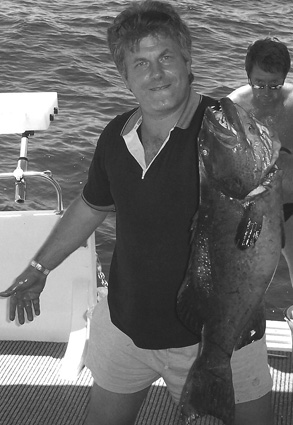The rain and wind left behind from Cyclone Monica certainly caused some massive transformations in the fishing stakes.
Water temperatures plummeted by 7 in some river systems signalling a changing of the guard. Normally there is a gradual change from summer conditions to winter conditions but the enormous late wet season and its cooler climate has drawn a line in the sand.
Even though the rains switched off some of our more targeted species, I'm sure most anglers were glad to see the back endof the biggest wet season in over a decade. Bigger barra, tarpon and mangrove jack quickly went off the bite in late April before traditional winter species such as trevally, steel back salmon, bream and smaller queenfish came on the burst.
Fingermark remained fairly consistent and some grunter to 60cm have been recorded across the flats. Permit or snub-nosed dart to 5kg have been caught at the mouth of the Daintree River. You know water conditions are much cooler when they arrive.
Mudcrabs also relish the cooler conditions and have found their way into many of the pots in the muddy creeks. Drag netters have enjoyed the spoils of a big wet season by cleaning up on prawns along the beaches.
On the reef, catches increased upon the arrival of cooler water temperatures and with the current turning north bag limits of coral trout and small and large mouth nannygai have been common. Getting bait to the bottom has been impossible at times as the fish are really on the go. Spanish mackerel, big GTs, cobia and reef mangrove jack have also been in amongst the red schools. They have been susceptible to the old ganged pilchard floated in mid water. Fishing in 30m of water and choosing the weeks leading into the full and new moons have been most productive and this should continue in June. Pick the right weather and moon phase and you won’t be disappointed.
In June it will be worth keeping an eye on the beach fishing opportunities especially near a major river or creek. Times have been tough in recent months at these locations but cleaner water should present in June.
On the high tides look for bait congregating and becoming nervous a little way offshore. Casting livebaits such as herring or sardines, or casting poppers amongst this surface action can produce some great action from predatory species like trevally, queenies, tarpon and blue salmon.
On low tides the better action should be found in the mouths of gutters along the beaches, where predators lay in ambush. Other bonus fish could include dart, whiting and flathead along the beaches and the old peeled prawn should see the task completed. Persistence and a watchful eye should see some wonderful results finally come to fruition.
Overall the enormity of the wet season will have its benefits and with many of the popular species breeding well things are looking rosy for the year ahead. There is a good supply of bait for the pickings and all we need now is for a series of calm clear days to light the wick.
Next month we'll be able to supply the competition results from the Carnivale period.
Reads: 2005
Angelo Voulgaris got in amongst the explosive reef fishing and was rewarded with this great coral trout.




